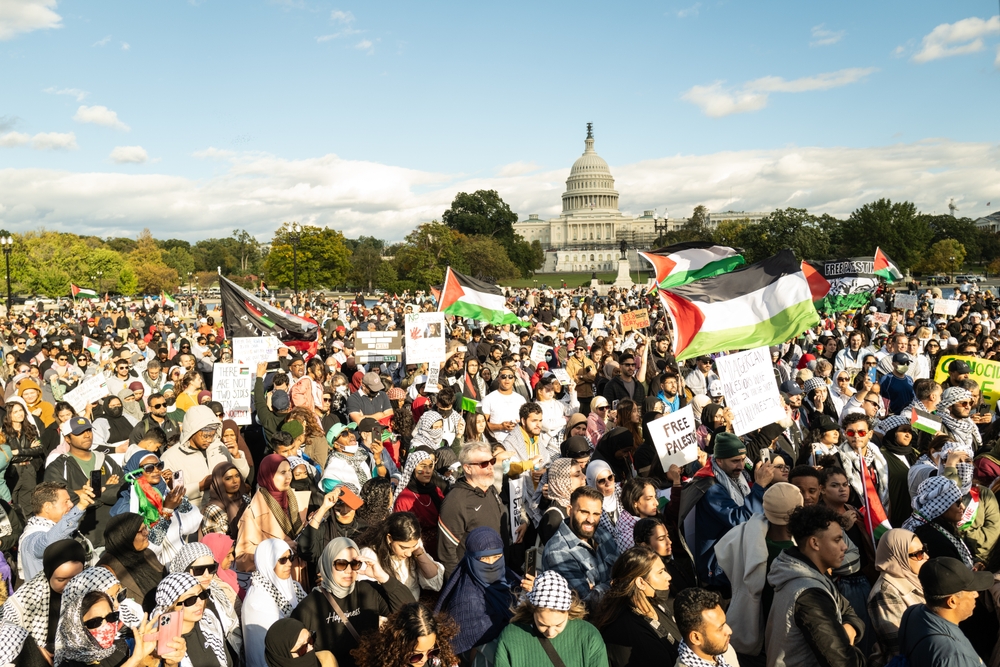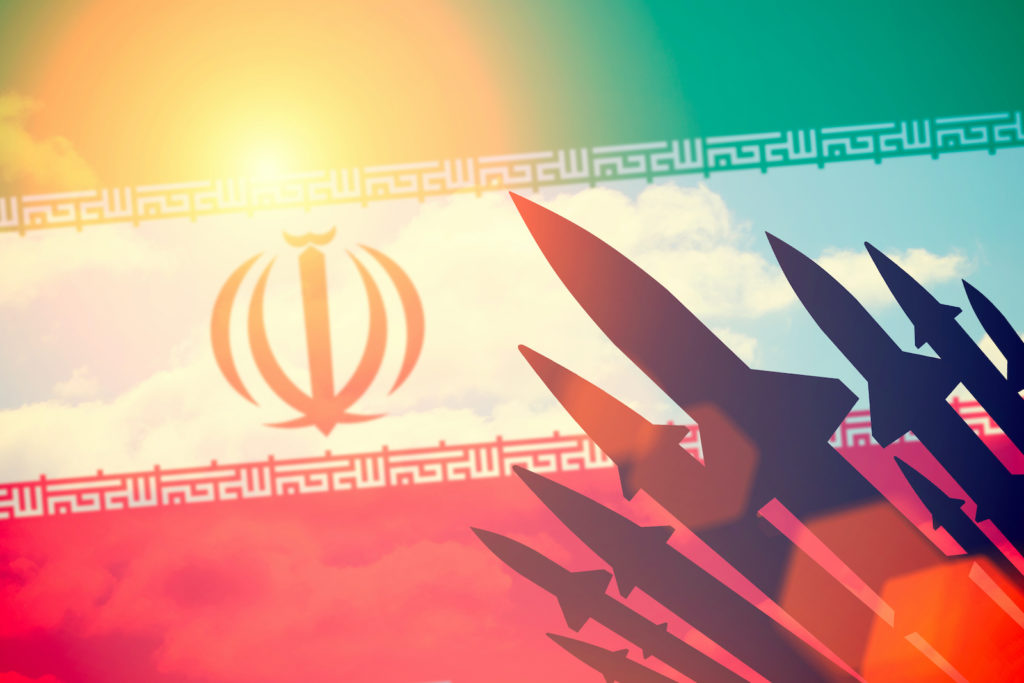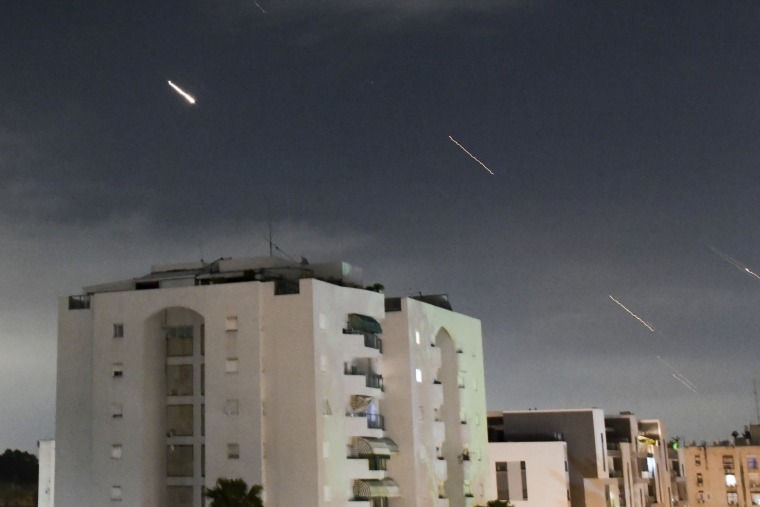UPDATES
The Pitfalls of the Palestinian UN Strategy/ The increased Gaza Threat
Aug 1, 2011
Update from AIJAC
August 1, 2011
Number 08/11 #01
This Update features some more comment on the pitfalls of the problematic Palestinian strategy of seeking unilateral recognition of statehood at the UN.
First up is the Washington Post’s Jackson Diehl, who argues that this policy is additional blunder by Palestinian Authority (PA) President Mahmoud Abbas. He points out that reconciliation with Hamas, part of the strategy to present a unified Palestinian front, has gone nowhere, Palestinians are increasingly questioning what a UN vote can accomplish, and economically, the PA is in deep trouble. He even raises the possibility that Abbas may be seeking to provoke Palestinians to take to the streets in a third Intifada. (Interestingly, Abbas has subsequently made statements which seem to support this view). For all that Diehl has to say about the mistake being made by Abbas, CLICK HERE. Meanwhile, a group of international statesman and intellectuals explain why the UN bid is a bad idea for the Palestinians. Even Ziad J. Asali, the head of the American Task Force on Palestine (a pro-Palestinian lobby group in the US), has publicly expressed his concerns about the dangers of the UN move.
Next up is distinguished American political scientist Michael Curtis, who looks at the legal status of a unilateral Palestinian declaration, and especially the Palestinian obligations under international law. He reviews in detail these obligations according to the Oslo Accords and many subsequent Israeli-Palestinian agreements. He says that acting unilaterally to declare statehood would be a clear breach of many of those obligations, and concludes “It should be recognition of necessity, as well as adherence to moral obligations, for Palestinians to accept that direct negotiations with Israel are the only way to achieve a just and lasting peace.” For Curtis’s complete argument, CLICK HERE.
Finally, top Israeli security affairs journalist Ron Ben Yishai reports on the vastly expanded smuggling of weapons into Gaza. He notes that Hamas has doubled its rocket arsenal over recent months, as well as gaining much increased stocks of chemical explosive and anti-aircraft weapons, meaning they now have a vastly increased ability to disrupt life in southern Israel. He explains that this is due to the fact the new Egyptian government has essentially given up on trying to halt such smuggling from Sinai, and today, “300,000 Bedouins belonging to four or five large tribes are now the Sinai’s true rulers. These tribes’ main income is based on smuggling”. For more on this worrying development, CLICK HERE.
Readers may also be interested in:
- French President Sarkozy breaks a European taboo on discussing the need for two state for two peoples in any Israeli-Palestinian peace settlement.
- An interesting take on Israel’s controversial new anti-boycott law from Israeli academic Alexander Yacobson.
- Israeli blogger Shmuel Rosner offers some quick points for understanding the large-scale protest over housing prices in Israel.
- Terrorism expert Matthew Levitt on Iran’s efforts to evade responsibility for the 1994 AMIA bombing in Argentina. Plus Patrick Clawson on the US Treasury’s finding of a significant link between Teheran and al-Qaeda.
- Turkey expert Soner Capagtay on the dramatic mass-resignation of the heads of the Turkish military over the weekend. Plus, an earlier interesting piece on the state of Turkish politics from academic expert and former government expert Harold Rhodes.
- A useful short history of the Libyan conflict to date – which seems to be fading from media coverage – by strategic expert Austin Bay.
- Some examples from the many stories and comments now appearing at AIJAC’s new daily “Fresh AIR” blog:
- A post pointing out comments from Palestinian negotiator Nabil Sha’ath, which seem to indicate that the PA UN bid has nothing to do with seeking a genuine two-state accommodation with Israel, and that the goal of Israel’s replacement by a Palestinian majority entity remains.
- A post on the PA financial crisis, the failure of the Arab state to help, and the likelihood that the PA UN bid will make things worse.
- A post discussing the problematic nature of UNRWA, the UN agency for Palestinian refugees, and a recent report on a positive alternative.
- Yet more good sources for understanding the Oslo terrorist attack.
- Iranian President Ahmadinejad blames an Israeli conspiracy for the failure of Iran to gain more from the Arab Spring.
The blunders of Palestinian leader Abbas
By Jackson Diehl
Washington Post “Post-Partisan”, July 21, 2011
Back in May, Palestinian President Mahmoud Abbas adopted a new and radically different political strategy. Turning his back on the United States and peace talks with Israel, he signed a ”reconciliation” agreement with the Hamas movement and announced his intention to appeal to the United Nations in September for recognition of Palestinian statehood.
September is still six weeks away, but already it’s becoming clear that Abbas committed a monumental blunder, one that will leave his movement at a dead end — and possibly lead to an eruption of violence in the West Bank and Gaza.
First, the Palestinian reconciliation has gone nowhere. Hamas, which controls Gaza, and Abbas’s West Bank-based Fatah have reached an impasse over the appointment of the interim government they agreed would prepare for next elections by next May. The reason is relatively simple: Abbas is insisting that the administration be headed by his current prime minister, Salaam Fayyad, and adopt his governing program, including recognition of Israel. Hamas, predictably, won’t agree.
Neither side can easily back off. Western governments and Israel have made clear to Abbas that if Fayyad, a trusted moderate, is not retained or if Hamas does not recognize Israel, it will be cut off from aid as well as West Bank tax revenues. That would make it impossible to pay the 150,000 Palestinian government employees and trigger a major economic crisis. But Hamas, which despises Fayyad, can hardly agree to a “unity”government over which it has no influence.
Meanwhile, the Palestinian administration is already having trouble meeting its payroll, thanks to an apparent curtailment of aid from Persian Gulf countries. Employees received only half their salaries in July, and Abbas was quoted last week as saying he was “losing sleep” over his crumbling finances. He is likely to lose more. Both houses of Congress have passed resolutions warning that U.S. aid — which amounted to $500 million this year — also will be suspended if the Palestinian appeal to the United Nations goes ahead.
Having crawled far out onto a limb with the publication of a New York Times op-ed in May announcing that diplomatic initiative, Abbas is sticking to the U.N. membership bid. But in private and, increasingly, in public, influential Palestinians are conceding that the initiative was a bad idea. Palestine will not be accepted as a U.N. member, as that can be blocked by the United States’ Security Council veto.
The U.N. General Assembly could upgrade the Palestinians’ status from “observer” to “non-voting member,” but this would mean little. In exchange for losing U.S. aid and possibly the tax revenue that Israel controls, the Palestinians would get to join organizations such as UNICEF. Meanwhile they will provoke formal votes against their cause by the United States, Canada, Germany, Italy and a probably a number of other European states.
In the West Bank and Gaza, nothing will change for the better — in fact, it will certainly get worse as aid money disappears and salaries go unpaid. Frustrated Palestinians, who have remained mostly quiescent during the Arab Spring, may finally take to the streets.
Which raises the question: Is that what the Palestinian leadership actually wants?
Increasingly, it seems so. This week Marwan Barghouti, a Palestinian leader jailed in Israel with a large West Bank following, released a letter calling for mass demonstrations in September. Other Palestinian spokesmen are hinting at a “third intifada,” which they say will erupt when the U.N. General Assembly vote takes place.
I heard such talk last week from Maen Areikat, the Palestinians’ official representative in Washington. Areikat, who is close to the Abbas leadership, insisted that it was not advocating or planning a new uprising. “But we have limited powers and limited capabilities,” he said. “This could turn into a mass movement by the people to change the status quo.”
Or maybe not. A poll conducted by Stanley Greenberg and the Palestinian Center for Public Opinion and released Thursday by the Israel Project showed that two-thirds of Palestinians oppose a third intifada, and only 14 percent said they would personally participate in one. Only 4 percent said appealing to the United Nations for statehood should be one of Abbas’s top two priorities.
As one veteran Palestinian leader, Nabil Amr, put it this week, Abbas has “climbed a very high tree” — without any clear way of safely getting down.
Back to Top
————————————————————————
Negotiations, not Unilateral Declarations
By Michael Curtis
The American Thinker, July 24, 2011
The conflict between Israel and the Palestinians can be resolved only by negotiations between the parties, not through unilateral declarations by one side. A unilateral declaration of a state would mean renouncing the many attempts made in many forums over the last 60 years to resolve the Israeli-Palestinian conflict by a negotiating process to which the Palestinians have agreed on many occasions. It would constitute a breach by the Palestinians of their past agreements and legal obligations. It would be an act of bad faith.
This piece will consider the nature of the Palestinian obligations (in the interest of brevity it will not consider the history and extent of Palestinian violence, which is still continuing). The initial obligation is that the ceasefire lines, established through the armistices following the 1948-49 war between Israel and the Arab states, were to remain in force until “a peaceful settlement between the Parties is achieved.” Following the wars the basis for resolution of the conflict became United Nations Security Council Resolution 242 of November 22, 1967, and UNSC Resolution 338 of October 22, 1973.
Resolution 242 called for efforts to achieve a settlement based on a “just and lasting peace,” and on the right of states in the Middle East to live in peace, within secure and recognized boundaries. Boundaries would be determined by negotiation, not by force or by unilateral action of any of the parties, nor were they to be imposed. Resolution 338 repeated the call for negotiations between the parties.
Negotiation achieved two peace treaties. The Israel-Egypt treaty on March 26, 1979 encouraged negotiation by inviting “the other Arab parties to the (Arab-Israeli) dispute to join the peace process with Israel.” The Israel-Jordan treaty of October 26, 1994 stated that disputes arising out of the application or interpretation of the treaty should be resolved only through negotiation.
The preamble of the Camp David Accords on September 17, 1978 provided a framework for negotiations to establish an autonomous, self-governing authority in the West Bank and Gaza. Palestinians were urged to join in discussion of the autonomy and the election of such an authority but did not do so.
At the Madrid Conference on October 30, 1991, the objective was to foster negotiations on two tracks, bilateral and multilateral; one was for an interim self-government arrangement, and the other for permanent status agreement. The Madrid Conference led to the Oslo I Accords of September 13, 1993. These Accords were the first public face-to-face bilateral negotiations between Israel and the Palestine Liberation Organization (PLO). The hope was that they would lead to further negotiations in which “final status issues” would be resolved.
The Accords, signed by Prime Minister Yitzhak Rabin and Yasser Arafat, chairman of the PLO, and by President Bill Clinton, provided for the creation of a Palestinian Authority (PA) that would have responsibility for the administration of territory under its control. By exchange of letters between Rabin and Arafat, the former recognized the PLO as the legitimate representative of the Palestinian people, while Arafat acknowledged the right of Israel to exist and renounced the use of terrorism and other violence.
Oslo I laid out a five-year timetable, an interim period during which permanent status negotiations would take place in stages. During this period a Palestinian Interim Self-Government Authority and an elected Council would be established in the West Bank and the Gaza Strip. Israel would withdraw from the Gaza Strip and the Jericho area. The Palestinian Authority would have power over education, health, culture, social welfare, direct taxation, and tourism. Other subjects, Jerusalem, settlements, refugees, security, and borders were to be negotiated later.
Oslo I was to be followed by confidence-building measures. These have taken a number of forms, the more important ones being the Gaza-Jericho Agreement, August 29, 1994; Oslo II, September 28, 1995; the Hebron Protocol, January 17, 1997; the Wye River Memorandum, October 23, 1998; the Sharm el-Sheikh Memorandum; September 4, 1999, the Camp David Summit, July 2000; and the Annapolis Conference, November 2007.
The Gaza-Jericho Agreement dealt with the transfer of powers and responsibilities. Israel would be responsible for Israelis and the settlements in the areas; the PA would be responsible for public order in general and for many civil matters. Israel was to withdraw from Gaza and Jericho while retaining control and supervision over air space.
On September 28, 1995 the Interim Agreement, known more familiarly as Oslo II, provided for redeployment in the West Bank, including Palestinian self-rule in a number of cities. The West Bank was divided into 3 areas: A, B, and C. Area A was to be under full control of the PA, area B under joint Israeli and Palestinian control, and area C under Israeli control. The Hebron Protocol, signed by Arafat and Prime Minister Netanyahu, provided for withdrawal of Israeli forces from most of Hebron within 10 days, and then further withdrawal from the West Bank, apart from settlements and military locations, before mid 1998.
The Wye River Memorandum, signed by Netanyahu and Arafat on October 23, 1998, focused on implementing Oslo II. The two sides agreed to resume permanent status talks. The Memorandum stated that “neither side shall initiate or take any step that will change the status of the West Bank and the Gaza Strip in accordance with the Interim Agreement.” On September 4, 1999 Prime Minister Ehud Barak and Arafat at Sharm el-Sheikh signed another Memorandum to implement Oslo II and other agreements. Again it was agreed that neither side would initiate or take any step that would change the status of the West Bank or Gaza.
An attempt to negotiate a “final status settlement” at the Camp David Summit in July 2000 in talks among Barak, Arafat, and Clinton failed but the two sides reaffirmed the decision that their differences could be resolved only by good faith negotiations. A further attempt at a settlement was made in late January 2001 at Taba. This Summit focused on four main themes: refugees, security, Jerusalem, and secure and recognized borders. However, the talks were discontinued on January 27, 2001, partly because of the reluctance to compromise on the part of the Palestinian delegation, and partly because of the preparations for the special Israeli election.
At a summit meeting at Sharm el- Sheikh in February 2005, Abbas continued to adhere to the principle of negotiation. In his speech of February 8, 2005 he reiterated that “our adherence to the peace process points of reference, the resolutions of international legitimacy, the agreements signed between the PLO and the government of Israel, and the roadmap (of the International Quartet).” At the conference in Annapolis, Maryland in November 2007, Prime Minister Ehud Olmert and Abbas, attempted to negotiate a peace settlement along the lines of President Bush’s roadmap for peace.
For Palestinian authorities, to introduce a unilateral declaration of independence would be a breach of their obligations, especially those of Oslo II. It should be recognition of necessity, as well as adherence to moral obligations, for Palestinians to accept that direct negotiations with Israel are the only way to achieve a just and lasting peace.
Michael Curtis is Distinguished Professor Emeritus of Political Science at Rutgers University.
Back to Top
————————————————————————
Growing threat in Gaza
Fall of Mubarak regime allowed terror groups to smuggle in huge quantities of arms
Ron Ben Yishai
Ynet.com, 07.21.11
Seven months passed since the outbreak of Arab world uprisings. The wave is not over yet and it is still difficult to estimate its implications and how it will affect, in the long run, Israel’s strategic, political and security situation. However, at this time already we can see several developments that have a direct bearing on the security-military balance between Israel and elements that threaten it in neighboring theaters.
The main, immediate beneficiaries of what is known as the “Arab spring” are Hamas and Islamic Jihad in the Gaza Strip. The riots in Egypt and the removal of Mubarak and his associates from power prompted two developments: First, the Muslim Brotherhood is no longer an underground movement and has become an important, influential political element. The group’s influence prompted Egypt’s government to completely halt construction of the underground metal obstacle built with American assistance in a bid to block smuggling tunnels. The Egyptian regime is making no effort to curb new tunnels and has virtually suspended its battle against smuggling from Rafah to the Strip.
Simultaneously, Egyptian security forces preoccupied with domestic developments completely lost their hold on the Sinai Peninsula. Some 300,000 Bedouins belonging to four or five large tribes are now the Sinai’s true rulers. These tribes’ main income is based on smuggling in general, and on smuggling to Gaza in particular, and they quickly exploited the security vacuum in the peninsula in the wake of the revolution.
As result of these developments, arms shipments to the Strip have been surging in recent months: Everything that has been sent by the Iranians and their emissaries in recent years and was hidden by the Bedouins – who waited for an opportunity to pass it over to Hamas under Egypt’s nose – has flowed freely into Gaza in the past five months. Meanwhile, new shipments arrived and were transferred to Hamas and Islamic Jihad without delay or a need to hide them.
10,000 rockets in Gaza
Consequently, terror groups in the Gaza Strip doubled their rocket arsenals. Today, according to highly credible sources, these organizations possess some 10,000 rockets of all types, a similar number to the Hezbollah arsenal in the Second Lebanon War.
While this is a disturbing figure, the overwhelming majority of rockets held by Hamas and its allies are short-range projectiles with relatively small warheads. However, Gaza terror groups, and mostly Hamas and Islamic Jihad, hold thousands of mid-range Grad rockets, and a few heavy Fajr rockets that have a range of some 65 kilometers (roughly 40 miles) and can reach the outskirts of Bat Yam, just south of Tel Aviv.
This means that in the next major clash in the Strip, Hamas and Islamic Jihad will be able to disrupt life not only in south-central Israel more than before, but also disrupt the orderly operations of IDF and Air Force basis in the area.
Moreover, from the beginning of the year, the Bedouins transferred into Gaza three times (!) the quantity of industrial explosives compared to the quantity handed over throughout 2010. The shipments included advanced explosives that would enable Gaza groups to produce more dangerous, destructive bombs than in the past. In addition to rockets and explosives, large quantities of anti-aircraft weapons – and mostly shoulder-held missiles and light artillery – were also smuggled into the Strip. Such arms were available in Gaza before but in small quantities. Now, the quantities are higher, creating a greater threat for Air Force choppers and jets
Tags: Palestinians











